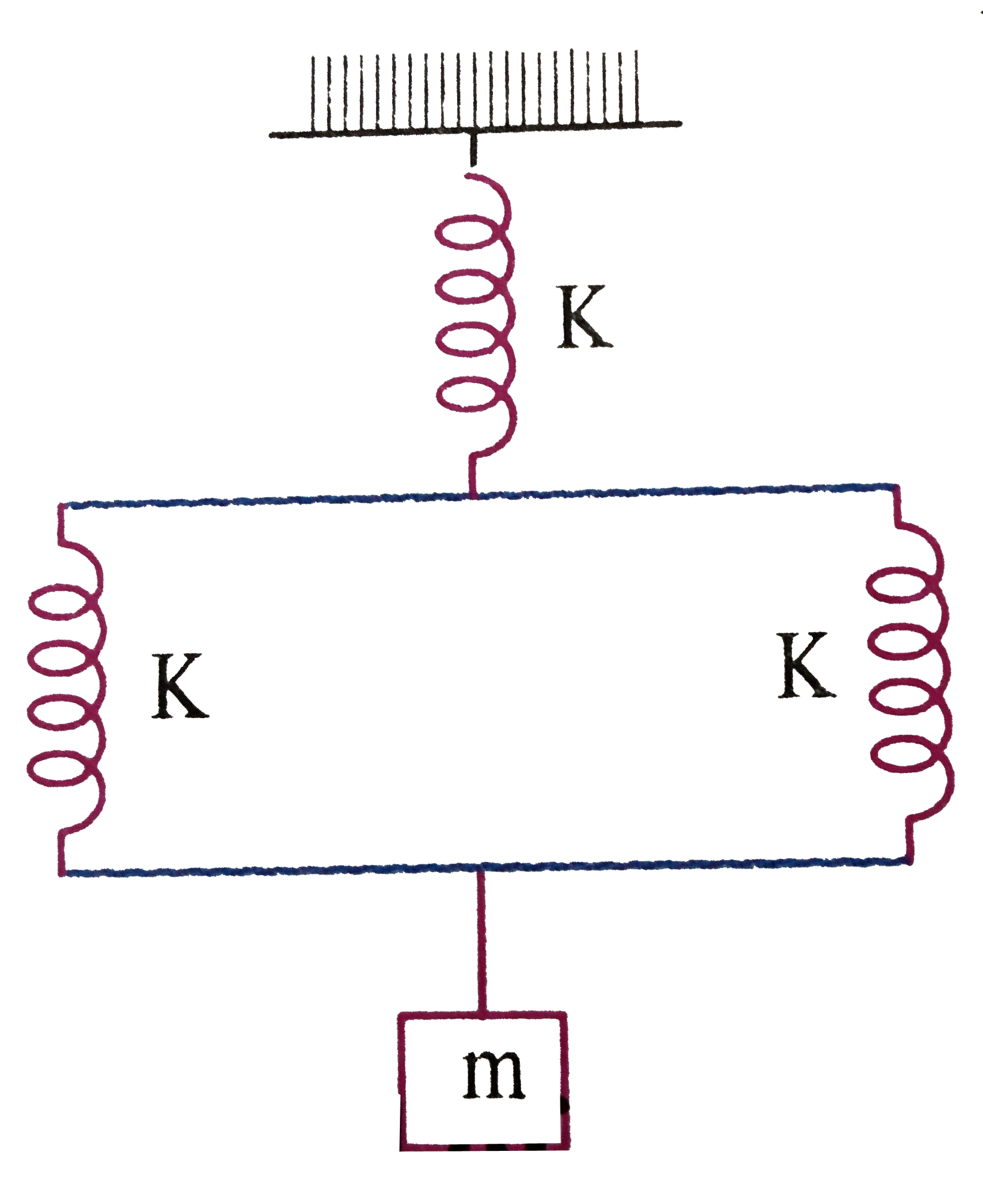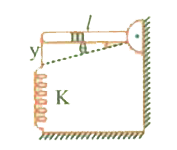A mass is suspended at the end of a spring and performs SHM with a time period 3 seconds, while the time period f same mass with other spring is 4 second. If that mass is connected with the combination of the two springs connected in series then time period of oscillator is
7s
1s
5s
25s
To solve the problem, we need to find the time period of a mass connected to two springs in series. We know the time periods of the individual springs and can derive the equivalent spring constant for the series combination. Here’s a step-by-step solution:
Step 1: Identify the given data
- Time period of the first spring (T1) = 3 seconds
- Time period of the second spring (T2) = 4 seconds
Step 2: Calculate the spring constants
The time period T of a mass-spring system is given by the formula:
T=2π√mk
From this, we can express the spring constant k in terms of the time period:
k=4π2mT2
For the first spring (k1):
k1=4π2mT21=4π2m32=4π2m9
For the second spring (k2):
k2=4π2mT22=4π2m42=4π2m16
Step 3: Calculate the equivalent spring constant for springs in series
When two springs are connected in series, the equivalent spring constant keq is given by:
1keq=1k1+1k2
Substituting the values of k1 and k2:
1keq=94π2m+164π2m=254π2m
Thus,
keq=4π2m25
Step 4: Calculate the time period of the combined system
Now we can find the time period Teq for the equivalent spring constant:
Teq=2π√mkeq=2π√m4π2m25
This simplifies to:
Teq=2π√254π2=2π⋅52π=5 seconds
Final answer
The time period of the oscillator when the two springs are connected in series is 5 seconds.
---
- Time period of the first spring (T1) = 3 seconds
- Time period of the second spring (T2) = 4 seconds
The time period T of a mass-spring system is given by the formula:
T=2π√mk
From this, we can express the spring constant k in terms of the time period:
k=4π2mT2
k1=4π2mT21=4π2m32=4π2m9
k2=4π2mT22=4π2m42=4π2m16
When two springs are connected in series, the equivalent spring constant keq is given by:
1keq=1k1+1k2
1keq=94π2m+164π2m=254π2m
Thus,
keq=4π2m25
Now we can find the time period Teq for the equivalent spring constant:
Teq=2π√mkeq=2π√m4π2m25
This simplifies to:
Teq=2π√254π2=2π⋅52π=5 seconds
The time period of the oscillator when the two springs are connected in series is 5 seconds.
Topper's Solved these Questions
Similar Questions
Knowledge Check
A body at the end of a spring executes SHM with a period t1, while the corresponding period for another spring is t2, If the period of oscillation with the two spring in series is T, then
AT=t1+t2BT2=t21+t22C1T=1t1+1t2D1T2=1t21+1t22The time period of a mass loaded spring is 'T'. If 20% of its turns are cut and removed and same mass is attached to the remaining spring then it oscillates with a period of
A5T4B√5T2C4T5D2T√5A load of mass M is attached to the bottom of a spring of mass 'M/3' and spring constant 'K'. If the system is set into oscillation, the time period of oscillation is
A2π3√10MKB4π√M3KC4π√MKD2π√M3K
Periodic time of oscillation T1 is obtained when a mass is suspended from a spring and if another spring is used with same mass then periodic time of oscillation is T2 . Now if this mass is suspended from series combination of above springs then calculated the time period.
View SolutionThe time period of a mass suspended from a spring is T. If the spring is cut into four equal parts and the same mass is suspended from one of the parts, then the new time period will be
View SolutionThe time period of a mass suspended from a spring is T if the spring is cut in to equal part and the same mass is suspended from one of the pert then the time period will be
View SolutionWhen a mass M is suspended from a spring, its period of oscillation is 2 second. If a mass 4 M is suspended from the same spring, then its period of oscillation will be
View SolutionA body of mass m is suspended from three springs as shown in figure. If mass m is displaced slightly then time period of oscillation is

View Solution

